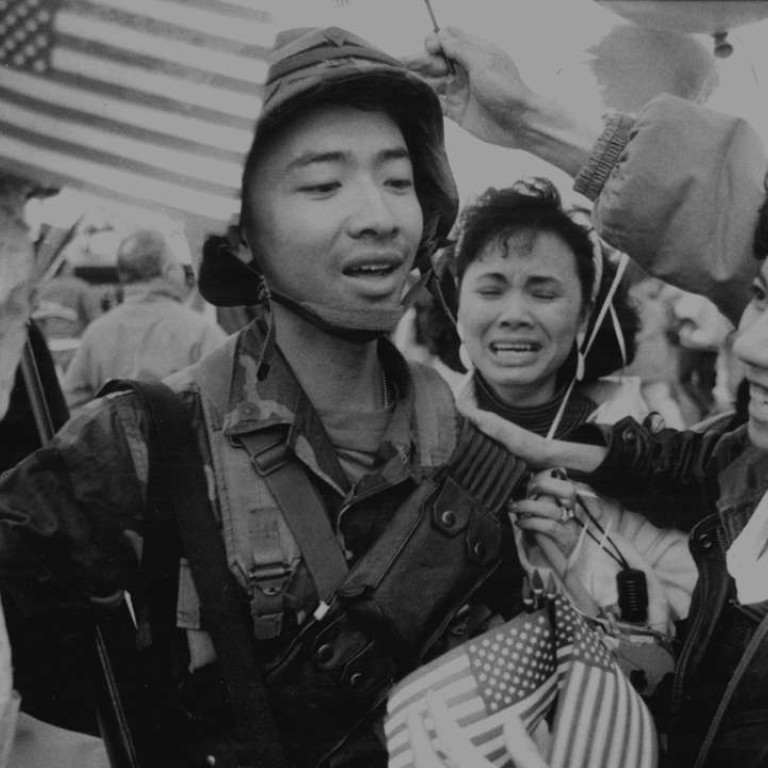
Book review: fighting Bruce Lee and other stories from 4 decades of Chinatown history
Photojournalist Dean Wong’s book about the recent history of five American Chinatowns is a story of struggle, from Japanese-American Tak Kimura taking on the Hong Kong martial arts legend to Aids-wracked drag queen Ryan Rhine
3.5 stars
Imagine challenging Bruce Lee to a fight. After meeting the Hong Kong-raised prodigy in 1959 in Seattle, Japanese-American fighter Tak Kimura did just that.
“Kimura threw a punch. Missed. The young Chinese man sent his fists flying, stopping inches from Kimura’s face. ‘I could feel the blows coming to me,’ he remembered. ‘He could come so close I could feel the wind; it was enough to knock you back. He took me down. It was incredible. He was unbelievably talented,’” Kimura tells photojournalist Dean Wong, a story recorded in his four-decade pictorial look at Chinatowns in five American cities: Seattle, San Francisco, New York, Vancouver and Portland.

Another wartime internee, Ted Munar, still broods over December 7, 1941: the day the Japanese attacked Pearl Harbour. Although Munar was just five, his friends turned on him and beat him up.
No longer American nor Filipino, Munar was a “Jap”, he recalls, adding: “Things like this flash back to me as I get older and it still hurts.’”
The most anguished character in Wong’s haunted cast, Aids-wracked drag queen Ryan Rhine, has chosen to quit medication and die with dignity. Meantime, Korean immigrant Eun-gyong Lee faces a host of constant headwinds, including blindness, ethnic prejudice and lack of stature – she is just 1.45 metres tall. When Lee lived in Korea, she was judged cute. No longer.

On the upside, on his return from the 1990-1991 Persian Gulf war, spotlighted warrior Andy Cheng receives a hero’s welcome.
“When I pressed the shutter on my camera, Cheng was holding a bouquet of flowers in the right hand, an M-16 rifle slung over his shoulder, his sister behind him crying in happiness,” writes Wong, a dab hand at conveying emotion – the untold story behind the headlines.
But his most telling finding is the absurdity lurking behind his trans-urban backdrop, which may be ill-named because Chinatowns host pockets of Japanese, Vietnamese, and other Asian American families. Worse, Wong suggests, riffing on the 2009 book by travel journalist Bonnie Tsui, American Chinatown, the standard take resembles a theme park.

Just look at San Francisco’s. Before the 1906 earthquake, the city’s Chinatown buildings looked Western. After, with an eye on the precious land that Chinatown occupied, city leaders debated moving it south; in response, in a bid to boost their community’s image, Chinese merchants commissioned white architects to add Chinese features to buildings.
Cue a plague of pagodas. Chinese temples became the basic building block, as whites forged a new bilateral style endorsed by Asian Americans playing up their ethnicity to please the white man – or so historian Phil Choy says. “It was self-preservation,’” Choy adds.
Remember Choy’s take the next time you enter a Chinatown and think that you are seeing a real slice of China.

“With each downward stroke of the knife, the sound would reverberate through the cutting board, to the table, and then all throughout the house. Thump. Thump. Thump,” Wong records in the sharply visual verbal style that complements his photography.
Kumira isn’t pictured, although the Dalai Lama is, and instead there is a shot of a boy captured raising a barbell – a reflection of Wong’s stated belief that photography is less about light than nailing the decisive moment.
Seeing the Light: Four Decades in Chinatown by Dean Wong
Chin Music Press
